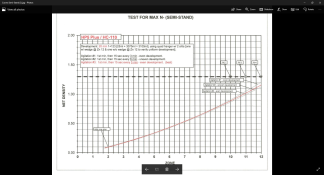I've never had luck with full stand. I always get drag.
Yes, I do too in some images. It's very risky doing stand. Semi-stand is the safer route and pretty much the same result/effect.
I've never had luck with full stand. I always get drag.
I apply the same development method and time even when I push it 1 or 2 stops and I get the same results as if I had used the suggested times from dev chart.
So the question is: Can I change the ISO in the same roll of film if I am going to develop it with the above stated method? If not,why? It's like developing 2 different ISO films in the same tank.
Yes, I do too in some images. It's very risky doing stand. Semi-stand is the safer route and pretty much the same result/effect.
I agitate once per minute, two inversions with a twist. Be sure to fill your tank (almost) all the way, regardless of the number of rolls. Otherwise, you get too much movement of the developer. But do leave a tiny space at the top so that you get some movement.
Most films have little underexposure latitude, but several stops of overexposure latitude. Don't scan your negatives: print them. Otherwise, grain is unduly exaggerated.

I agitate once per minute, two inversions with a twist. Be sure to fill your tank (almost) all the way, regardless of the number of rolls. Otherwise, you get too much movement of the developer. But do leave a tiny space at the top so that you get some movement.
Most films have little underexposure latitude, but several stops of overexposure latitude. Don't scan your negatives: print them. Otherwise, grain is unduly exaggerated.
I work with sheet film, so it's completely different procedure. I wouldn't consider "once every minute" semi-stand...
Great recomandation !No question is too silly.
The short answer is the ISO of the film is what it is, changing the camera's setting will only under expose or over expose it, depending on what you set.
Lots of people recommend that you determine a personal "EI" or Exposure Index by testing and to do that, you use the manufacturer's ISO as a starting point. That allows you to determine the most effective speed for a particular film used with your equipment, processed in your choice of developer using your personal method, whatever it is. So, for example, you may determine through testing, and just shooting, that you get the best results with Tri-X exposed at 320 instead of Kodak's ISO of 400, or you might find you like the results you get exposing it at 600 (not as common, but possible).
But just because you extend development. I.E. "push" the film in processing, won't turn it into an ISO 1600 film, it's still an ISO 400 film but underexposed by 2 stops. Changing the speed mid roll (to some faster speed) just means that those shots will be underexposed compared to the others on the roll.
I work with sheet film, so it's completely different procedure. I wouldn't consider "once every minute" semi-stand...

Nope, it's intermittent, as recommended by film manufacturers for decades. I used to use hangers, developing in total darkness. Agitation once per minute, lifting and draining, alternating from one corner to another, as shown in the photo below.
View attachment 178715
| Photrio.com contains affiliate links to products. We may receive a commission for purchases made through these links. To read our full affiliate disclosure statement please click Here. |
PHOTRIO PARTNERS EQUALLY FUNDING OUR COMMUNITY:  |


